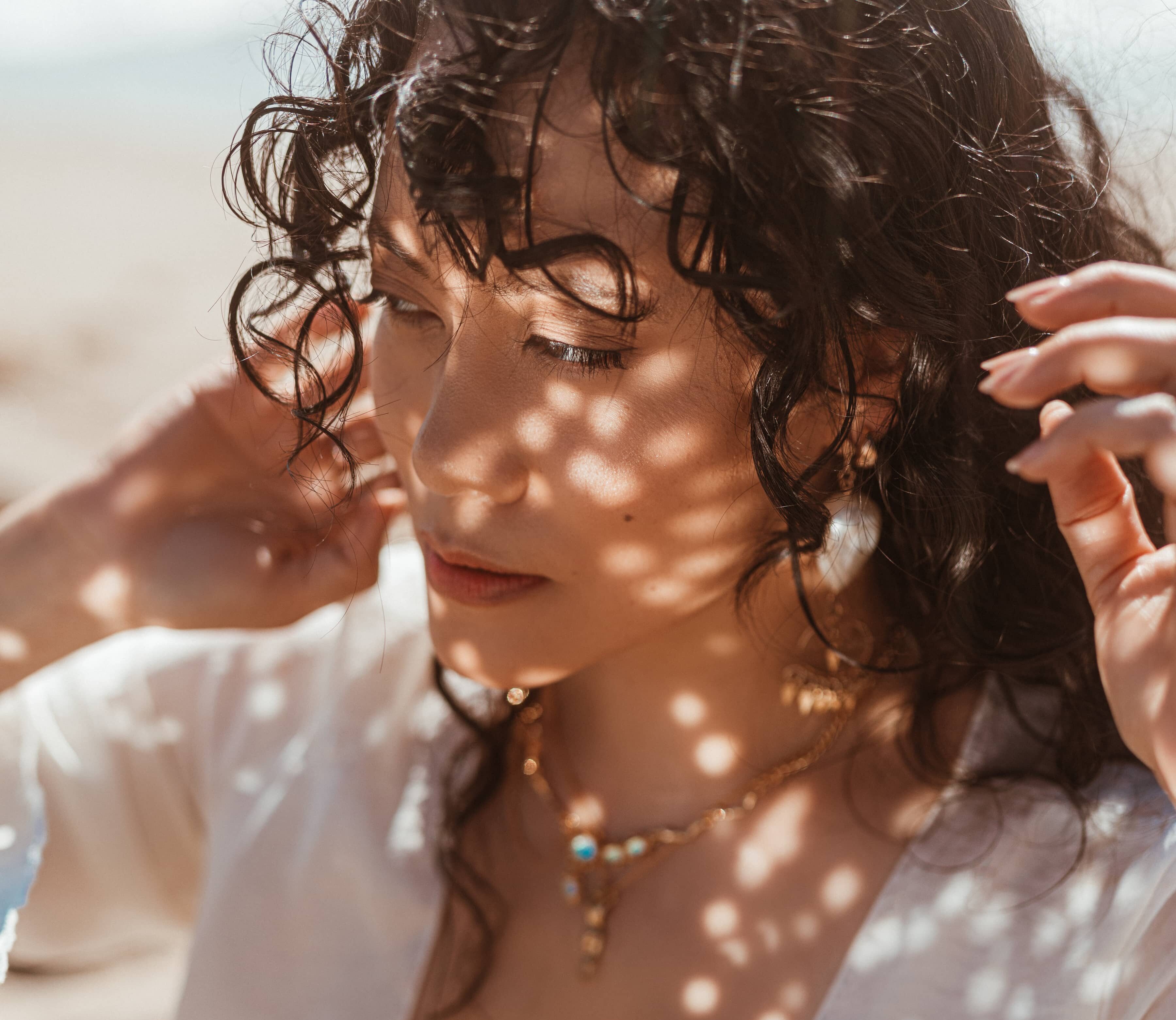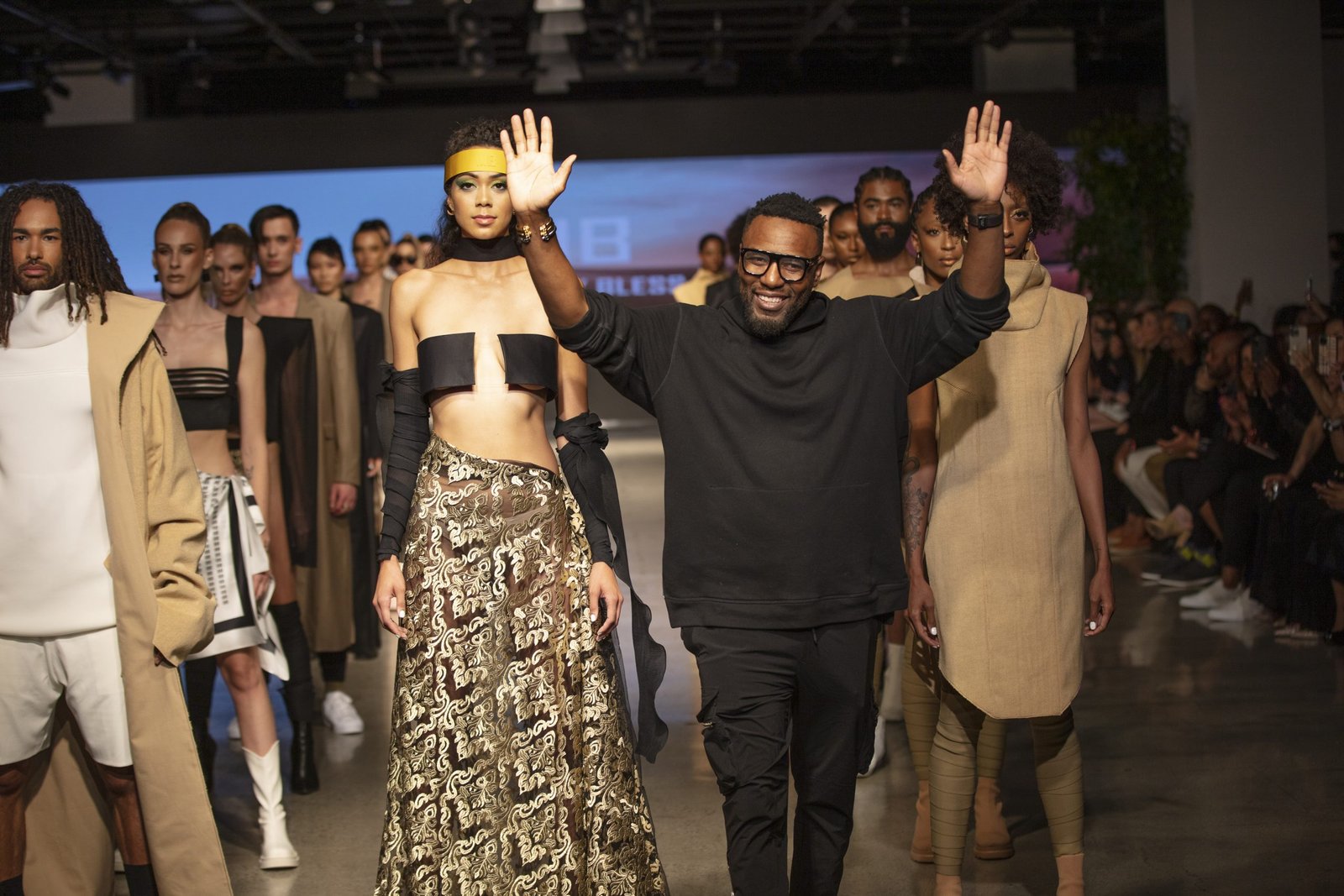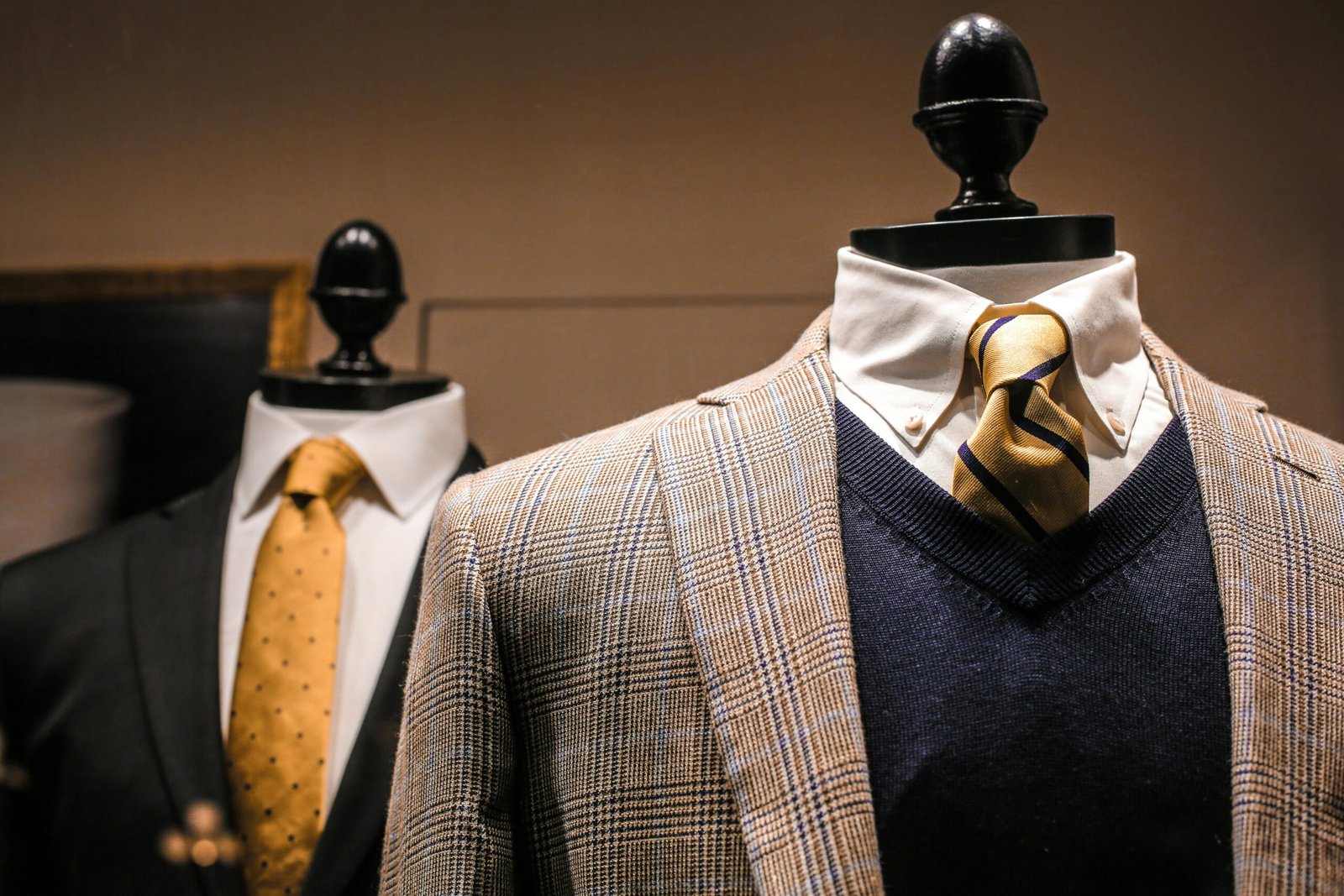In the captivating world of high-end fashion, one name stands out for its unparalleled imagination, meticulous craftsmanship, and romantic allure — Michelle Hébert.
This visionary designer has earned an esteemed reputation for creating masterpieces that transcend mere garments and elevate fashion to an art form. Michelle Hébert’s luxury brand beckons admirers to indulge in the realms of fantasy, where sumptuous detailing and a fascination with elegance, darkness, and provocation converge to create a truly ethereal experience.

Michelle’s aesthetic is a tapestry of contrasts, blending elegance and darkness, provocation and subtleness. This unique balance is what sets her apart from her peers, establishing her as a true visionary in the world of luxury fashion. Her designs resonate with those seeking to embrace their inner allure and embrace the allure of the unknown.
As the legacy of Michelle Hébert continues to unfold, her luxury brand remains an inspiration to aspiring designers and a beacon of refined elegance for fashion enthusiasts worldwide. Her boundless creativity, meticulous craftsmanship, and ability to weave dreams into reality have solidified her position as a true trailblazer in the realm of ethereal luxury. With each new collection, Michelle weaves a captivating narrative of beauty, romance, and mystique — an enduring testament to her status as a visionary of haute couture.
We spoke with Michelle at Sonesta Redondo Beach & Marina to discuss her upbringing, career, design process, inspirations, and more!
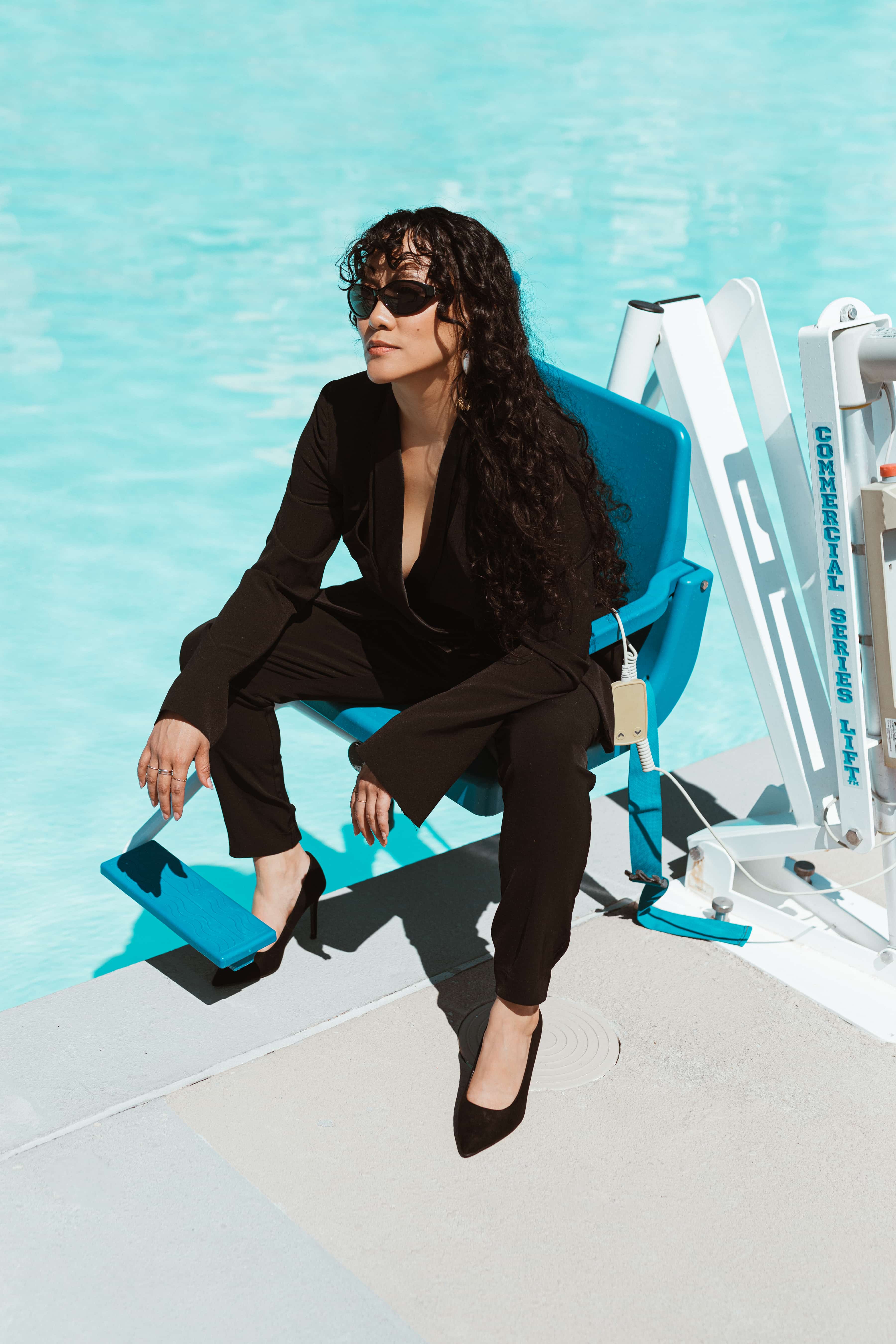
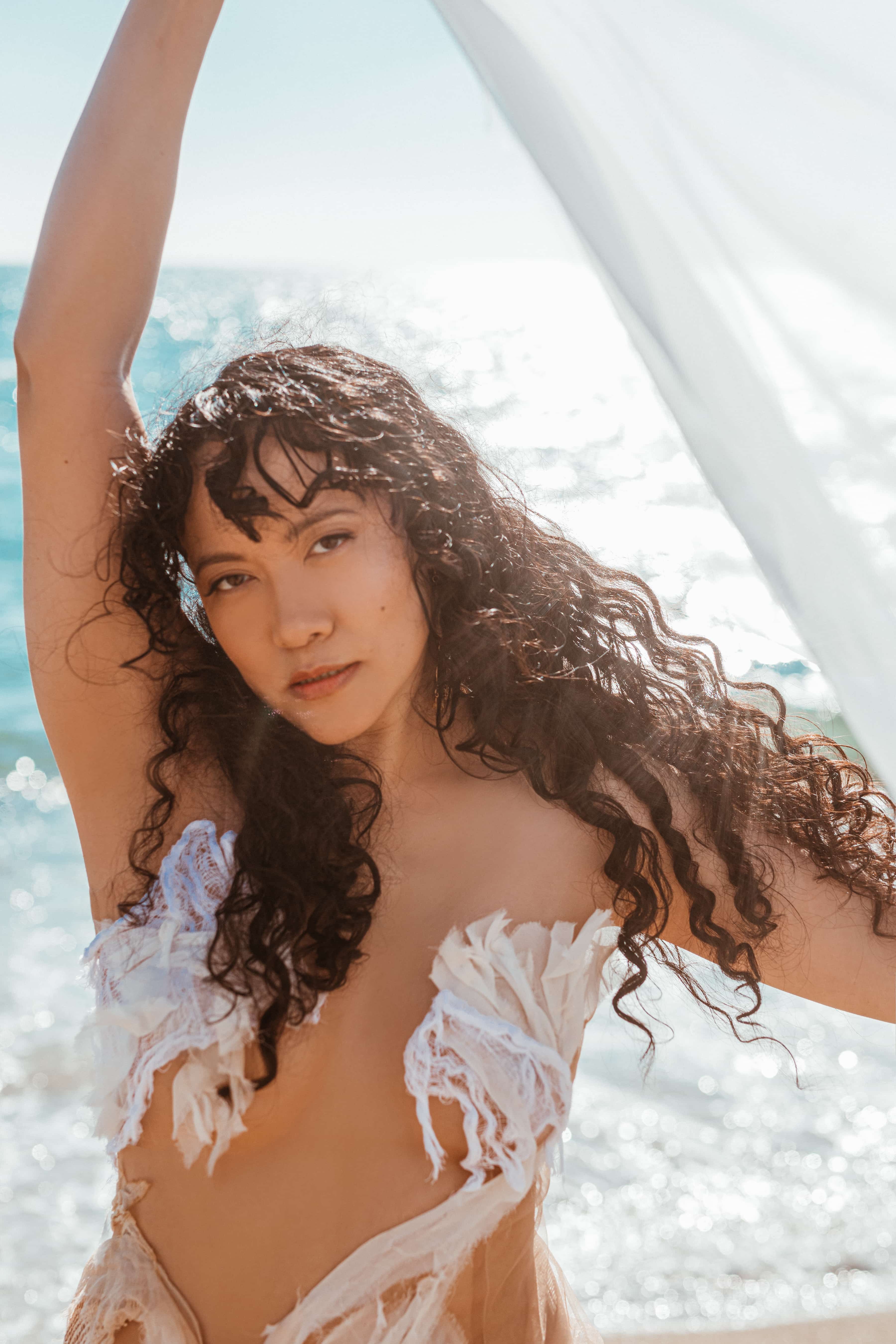
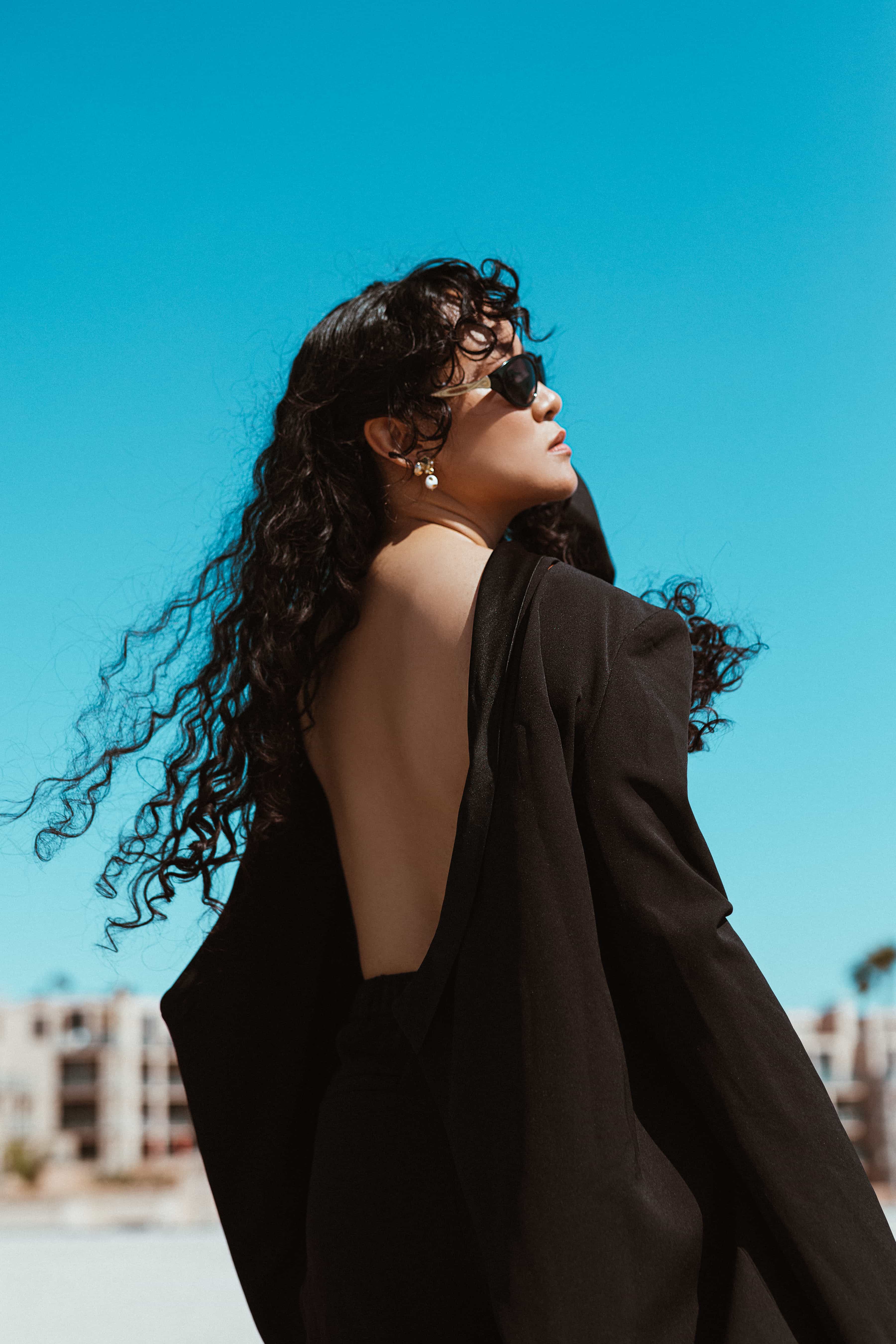
DESIGNS BY MICHELLE HÉBERT. PHOTOS BY NATASHA WILSON. MAKEUP BY LINA KEIKAM.
Tell us a little bit about you. Where is home?
I was born and raised in Southern California where I still consider home. My dad is half black, half white. My mom is Filipino Chinese. I grew up as a mixed kid, which was interesting at the time, you know, there weren’t a lot of people I could really look to see myself in, and often felt misunderstood. Maybe that’s why I was an introverted kid, and only as an adult, I’ve gotten a little better about that.
Has fashion always been your career plan since you were young?
No, well, I’ve always loved the arts, and when I was little I would draw all the time. My parents gave me this little plastic table that they let me put stickers on and draw all over. They were always happy to give me as much crayons and paper and as much as I wanted. We grew up modest, I remember living in a little condo in Covina for a while. I knew if they could, they would provide for my creativity.
Ever since I was little, I wanted to be an artist but didn’t know what medium to pursue. At one point, I wanted to be an architect, but I didn’t understand what went into that — the math of it all. And then after that, I wanted to be a comic book artist but I realized I wasn’t enjoying drawing the same characters over and over, and instead, I was more drawn to creating their outfits. I don’t even think I knew what a fashion designer was at the time, so even though I was 10, I remember declaring to my family that I wanted to make clothes and it just stuck. I’ve been working off my childhood momentum ever since.
What’s something people would be surprised to learn about you?
Hmm well, when I was little I actually really wanted to work with animals at one point. Maybe people wouldn’t be that surprised, but I think that’s where I would be if I hadn’t pursued the arts or fashion. I was really obsessed with sea creatures like orcas, and manatees, and I really loved cats as a kid. I remember as a kid I was like, “Oh my god, big cats are amazing!” and would check out books from my local library about cats. So essentially, I was really in love with the natural world. There was even a point where I remember pouring through astronomy books. So, maybe I would have gotten into the sciences or biology if I weren’t doing what I’m doing now.
What’s a typical day like for you as a designer and creative working in the industry?
Most of the things I do are not glamorous and a lot of it is the stuff that we don’t show. It starts with conceptualizing which can take 30 minutes or it can take weeks. There’s a lot of planning, be it planning out a new piece or scheduling a photo shoot. And while I’m in the construction process actually making a design, much of the hours spent creating a piece comes down to technical precision and editing. Not quite as exciting as the artistic act of sketching out a design, but just as important.
When I was in school, I remember they told us that 90% of the time you’re not going to be making the art, or rather, you’re not going to be designing. Instead, you’re going to be in the nitty-gritty of the project. Thankfully, I find a lot of fulfillment in this part of the process too.
What’s your favorite part of the process?
I appreciate all parts of the process in different ways. I love coming up with the idea, and then I love the moment when I actually get to see it before me and it’s real. These parts are electrifying. I get a surge of joy at the beginning, and a surge of joy as well as relief, at the end. The middle, I enjoy too — this is the essential part of the process where there is a bit of problem-solving and sometimes a bit of stress which isn’t always as fun. However, the process of building a piece is the only way to get from point A to point B. And at its best, it can actually be very rewarding and meditative, so I appreciate it in a different way.
When I’m in it, ideally in my flow state, crafting, it’s a different kind of experience.
The whole process can feel like an out-of-body experience sometimes. When I’m in the process, it’s all about that creation, that piece. And then, when it’s done, that’s when I can actually step back, and I come back into myself and just appreciate what I’ve done.

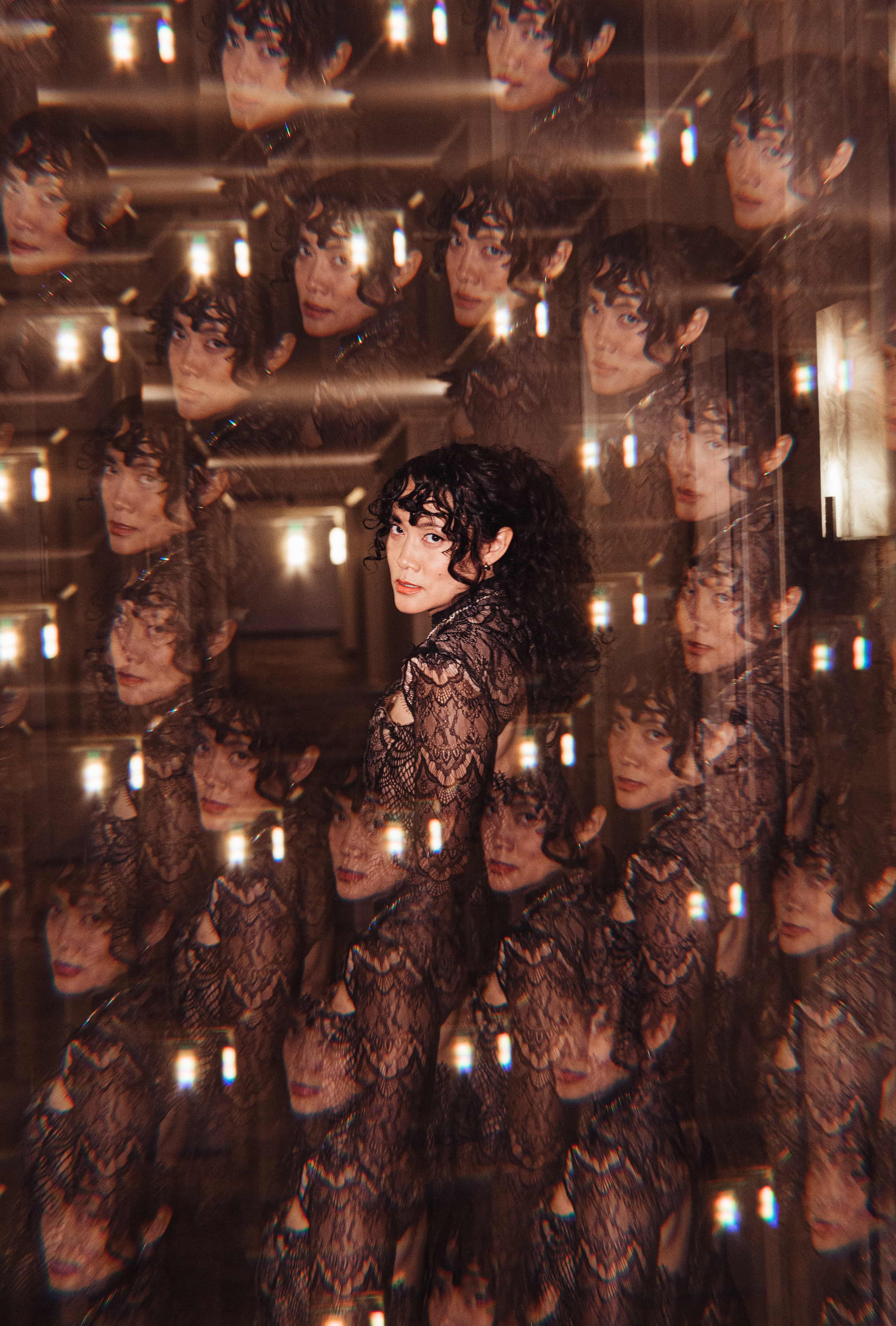

PHOTOS BY NATASHA WILSON. EARRINGS BY LATASHA LAMAR SELLERS.
The Fox Magazine is all about inspiration, what or who inspires you the most in your life?
The inspiration question is always a really tricky one because it’s kind of hard to pinpoint. I think I’m inspired most when I’m not expecting it. Typically, I don’t really like to go out and look for inspiration. I love when it hits me out of nowhere. It’s more like when I’m staring off into the distance or looking at trees or I’m, you know, listening to music and something about whatever I’m experiencing at that moment that triggers a feeling and then it triggers a thought. As you live in the world, you see things that you love, and you also see things that you don’t connect with, and your brain catalogs them. So, it’s this weird moment where a feeling happens, and I think all those little files, those thoughts that I’ve filed away, surface.
How did you get into fashion design?
When I was a student, I put my work out there in any way possible. Mostly, people found me through the power of the internet. The internet can be both good and bad, but one of the good things is it’s made the playing field a tad more accessible for artists. Because I made my work viewable online, people in complementary crafts, like photography, found me. They would reach out to collaborate and pitch their projects to me.
What do you enjoy most about being on set?
It’s fun to stand behind the camera and see the fruits of your labor meld with the talents of everyone else. Seeing my work on a person is when I feel my work looks best, and to see a whole scene come alive before my eyes and be a part of that. There’s no better feeling. I love being on set, which doesn’t happen as often as it used to, but I really miss those days.
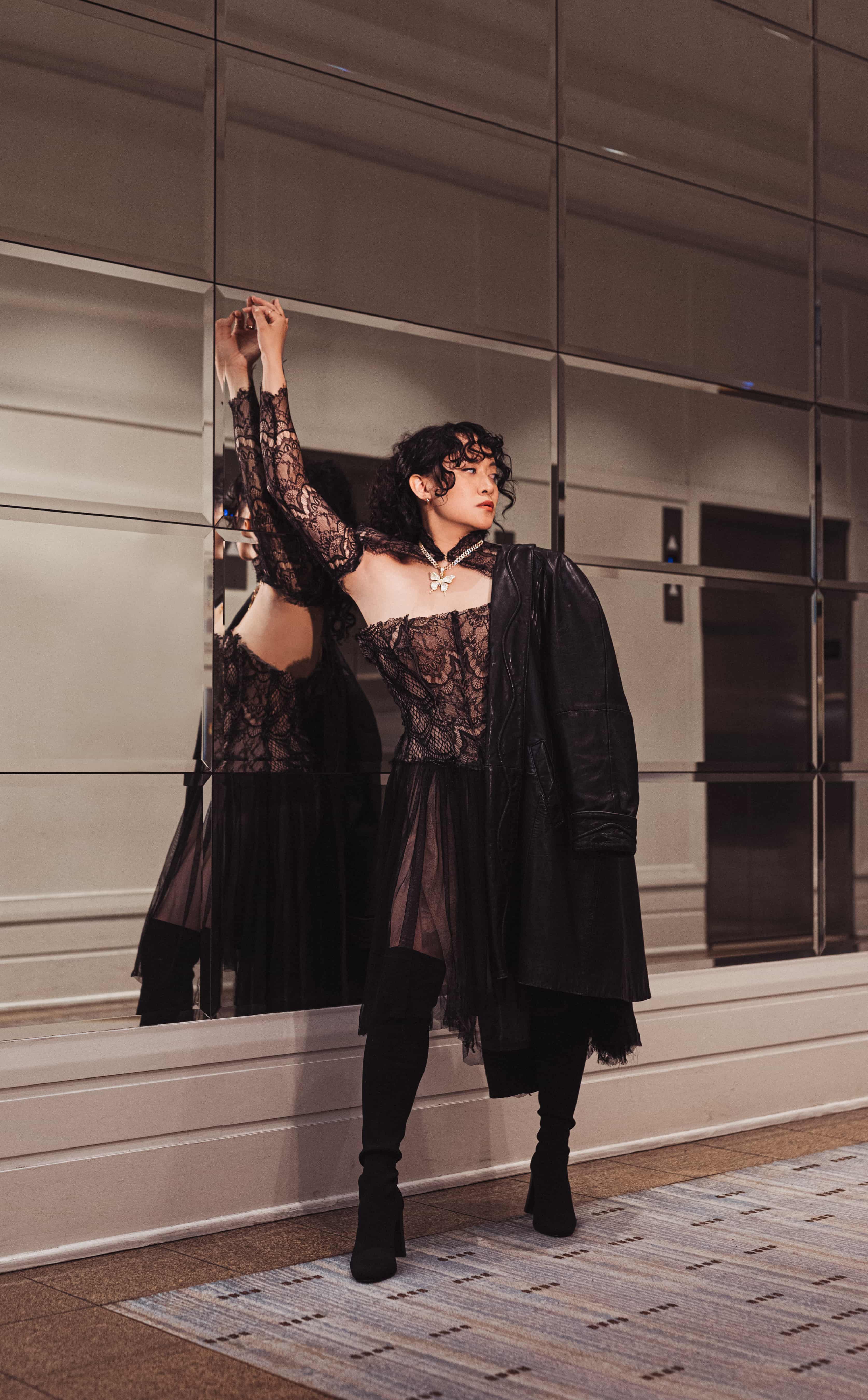
Do you like pointing your clients in the right direction or taking a more hands-on approach to crafting their design vision?
I first want to get to know my clients and let them tell me about themselves, share their style preferences, and tell me what drew them to my work. From there, I develop designs for them to choose from. It’s a collaborative process and I prefer it that way because I want them to feel both happy and like themselves in the garment I’m creating — I’ll still know I put my design sensibilities and myself as an artist into the piece.
Share your creative process when crafting the vision for your clients. What are the steps you take in making it all come together?
In most cases, after we decide on the design, I start the process by having their measurements taken, then I draft the pattern, create a mock-up, have a fitting in — which the client wears the mock-up, then I re-work the pattern and start working on the final piece. I have a final fitting with the client before making small final touches or handing it off to them.
If the turnaround time is really short such, as for production, I sometimes have to skip the mock-up and instead make any changes to the final piece. But I prefer having the extra step when possible. It can make a huge difference in my opinion and I highly recommend all designers make mock-ups whenever possible. I know making them isn’t as fun because it’s essentially a test piece that won’t be used outside of that single fitting, but regardless, my advice is to not skip that step except in special circumstances.
We adored your wedding dress for Quinta Brunson. What was the process like for creating that dress?
Quinta was absolutely wonderful to create with. After getting feedback on what she envisioned for her gown, I designed the dress drawing inspiration from favorite elements seen in my wedding design work. The bodice and sleeves were comprised of a lace we both loved, with the floral lace on her sleeves seeming to grow around and be one with her. Then, we decided to incorporate some three-dimensional elements by adding petals and silk peonies around the train. I’m so happy with how the piece came together and loved the process. Honored to have created art for such a talented fellow artist and lovely person.
What design elements separate your work from other designers? What makes your collections unique?
I have a specific way of approaching my designs and art. When I create I think of how I want the viewer to feel. Emotion and story are very important to me, but at the same time, I can be very analytical, or rather particular, about how I place lines and shapes around the form. I believe I think like this because I came from a traditional art background. In my youth, I honed my skills by drawing realistic portraits or elaborate surreal scenes on two-dimensional surfaces, but when I began working with the human body, I treated it like a canvas.
Just like with a blank page, the naked body offers so much possibility in how an artist can express themselves using the principles of art. Creating something harmonious by focusing on lines, shapes, color, and negative space is what is often top of mind for me.
Do you have any fundamental tips for young professionals looking to enter the fashion or multimedia art industry?
Remain a humble learner from now until the end. Humility will keep you grounded, and in the right doses, offer you clarity. As you grow as an artist and see interest in your work increase, you should of course acknowledge you’re good at what you do! But remember you can always improve, and there will always be more to learn.
Also, almost everyone you meet has a secret talent and is better and more knowledgeable in something you are not, so you have to remind yourself no matter how good you are at your specific craft, you are not superior to anyone because of it. The moment someone lets their ego take over and believes they are the best, that is the moment their art atrophies.

What’s your best advice for people looking to start in fashion, multimedia art, and more?
Share your work. Be open to feedback.
Your work is your voice. I like to think as artists, we use our mediums as another form of communication. If you want to make a statement, tell people who you are, or in a way “converse” with people who feel connected to your work, you need to put it out there.
And just like any conversation, people may say things that you like or don’t like. When people say things that aren’t constructive, maybe then it’s fine to brush them aside, but if people ever offer a thoughtful concern or criticism, it might be worth understanding where they are coming from before you dismiss them. You might learn something and become a better person because of it.
Rather than see someone else’s difference in opinion as a criticism, consider that difference a chance to better understand their way of seeing the world.
What is your favorite fashion-related motto, quote, or words to live by?
There was some point, I was a student. I was in community college and I was reading this quote about how when something is done, after, there’s nothing left to take away. And what I love about that is I think sometimes, when we’re creating things, we think, “Oh, more, more, more, more.”
And sometimes maximalism is great! I love skillfully-done maximalism. I’m not advocating for austere minimalism either. But as a designer, the question is, what are you trying to accomplish? Like, if you know what you’re trying to accomplish and you throw it all at the wall, maybe there’s a point where you edit and take things off the wall, and that’s part of the design process. You start to edit it and you start to pull things away until it’s at its best and most essential form.
The quote was by French writer and aviator Antoine de Saint-Exupéry:
“Perfection is achieved, not when there is nothing more to add, but when there is nothing left to take away.”
What can we look forward to next? Anything you want people to know?
I’ve been working on re-mastering my Fashion Design 101 course and am very excited because once it’s ready, the platform it’s on will be able to offer it in numerous languages. It has been a big undertaking, but it will be worth it once it’s released.
There’s a secret personal project I’ve been conceptualizing for the last year that’s still very under wraps. A way of exploring more honest self-expression through the many mediums I love, fashion design, of course, being one of them. Maybe this is a tease but I don’t like to share too much about a project until I’ve gotten it solidly underway but I do hope people keep a look out!
Connect with Michelle!
Credits
Photographer: Natasha Wilson
Makeup / Hair Stylist: Lina Leikam
Writer: Lisa Khiev
Creative Director: Mike Fox
Lighting Assistant: Justin Toyoshiba
Location: Sonesta Redondo Beach & Marina

